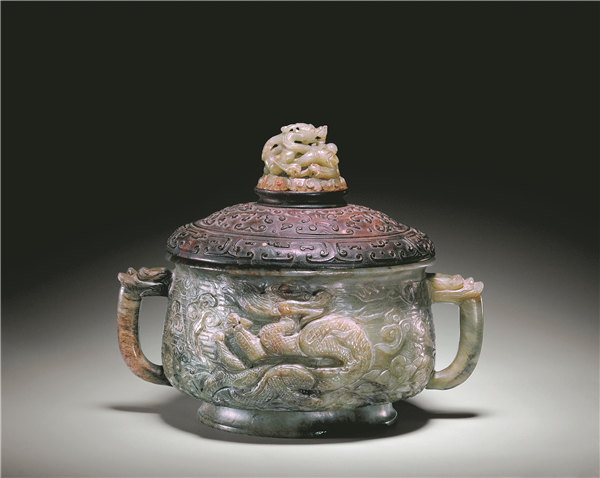

Most of these jade furnaces, similar to those created as far back as the Song Dynasty (960-1279), were based on the designs of bronze wares cast during China's Shang and Zhou dynasties, which spanned from the 16th to the 3rd centuries BC. In this context, Emperor Huizong of the Northern Song Dynasty, who lived between 1082 and 1135, played a significant role. Under his patronage, a small group of prominent antiquarian artists meticulously combed through and cataloged the emperor's enviable art collection, which included more than 800 pieces of bronze ware.
Depicted through both words and illustrations in a compilation titled An Inventory of Antiques From the Xuanhe Era, these bronze wares soon became templates for jade artisans. One bronze wine container in particular could have inspired a Song Dynasty jade furnace currently held by Beijing's Palace Museum.
Zuo, who included the item in an exhibition held early this year at the Nanjing Museum to trace the entire trajectory of China's jade development, believes that the ware's matching wooden cover and jade top were latter-day additions, probably from a Qing Dynasty (1644-1911) emperor.
"A deep sense of cultural awareness had grown from the accumulation of memories — this is what lies behind the furnace, which forms part of the Chinese jade story," Zuo remarks.